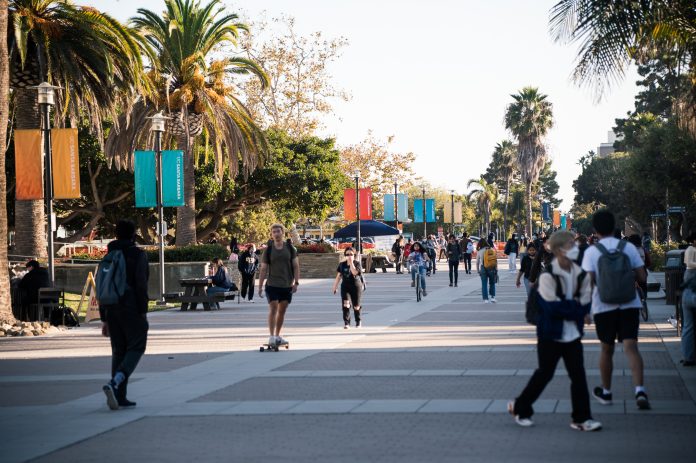Shoshana Medved
Investigative Beat Reporter
As Omicron variant cases sweep across the nation, many colleges are returning to remote learning. The University of California (UC) is no exception, with all nine colleges offering online instruction until the end of January. At UC Santa Barbara (UCSB), on-campus opportunities are available but limited, with Chancellor Henry Yang giving instructors the discretion to hold in-person classes.
However, things look different across many California high schools, where roughly 90 percent of students in the 2021-2022 school year reported to be learning in person. According to an article from the Los Angeles Times, 50 of the 80 school systems have reopened in Los Angeles County. The writers, Blume and Gomez, reported that high schools across the state are “fighting to stay open” in the face of the Omicron variant.
Colin Dumlao, a Ventura County high school senior, is one of many California students attending school in person. His school requires students to wear face masks and to conduct daily health surveys with free COVID-19 tests offered daily.
“I’m a little iffy about [in-person instruction] but nothing crazy,” Dumlao wrote to The Bottom Line. “As long as everyone complies and does their part, I’m hopeful that it will be ok.”
Though Dumlao appreciates the chance to be in person, he wouldn’t be surprised if his school chose to go online again.
“I would be a little bummed since it’s been fun being back, weird as that is to say,” Dumlao stated. “I just hope people grow some brain cells and start taking this whole thing seriously!”
The California Department of Public Health does not obligate students to take the COVID-19 vaccines or practice social distancing. However, the department strongly encourages “all eligible individuals” to get vaccinated.
“All students must have access to safe and full in-person instruction and to as much instructional time as possible,” the department’s K-12 education guidelines state.
Staff members at some California schools have protested the leniency of the current policies through “sickouts,” staying home to advocate for stricter COVID-19 guidelines. On Jan. 6, a sickout in San Francisco caused 900 teachers and aides to be absent. The following day, Oakland Unified School District was missing 503 of its teachers, leading to a temporary shutdown of 12 schools in the area.
“Teachers just want safety measures for the students and the staff,” San Jose Unified elementary school teacher Victoria Canote said in an interview with Edsource. “We are risking our health. The kids are risking their health.”
At UCSB, Chancellor Yang cited concerns over the Omicron variant in his decision to extend the remote learning period. In a campus-wide release on Jan. 8, Yang wrote that students, staff, and faculty may need to quarantine themselves throughout January due to the Omicron variant.
“Having a reduced campus population will help us to maintain campus operations as much as possible and allow our dedicated staff and faculty to observe COVID-19 isolation protocols if required,” Yang wrote.
Lauren Talwatte, a sophomore at UCSB, spent her first year at college entirely remote. She’s disappointed at the extension of online instruction but believes it’s necessary.
“I feel like at this point we should be used to making sacrifices to keep everyone safe,” Talwatte said. “[But] college is really expensive and it sucks that we have to pay thousands and thousands of dollars to watch Zoom videos.”
Talwatte’s sister attends an in-person public high school in the Bay Area. Students at her sister’s school must wear masks and follow basic COVID-19 protocols, which Talwatte believes “hasn’t affected her education as much.”
Though she believes there’s a disparity between high school and college guidelines, Talwatte thinks that college students are more likely to overcome the challenges of virtual learning.
“I feel like, hopefully, at base level college students are going to be more capable and more mature when it comes to learning on their own than high school students would be.”
Classes are still expected to be in-person again by Jan. 31, according to Chancellor Yang. His email expressed optimism about the possibility.
“We are committed to a return to in-person instruction, and are acting now because we believe that making this decision now will pave the way to a full return to classrooms as soon as possible,” Yang wrote.
The Bottom Line will continue to report on the Omicron variant and how it will impact students in terms of housing and their return to in-person instruction at UCSB.











